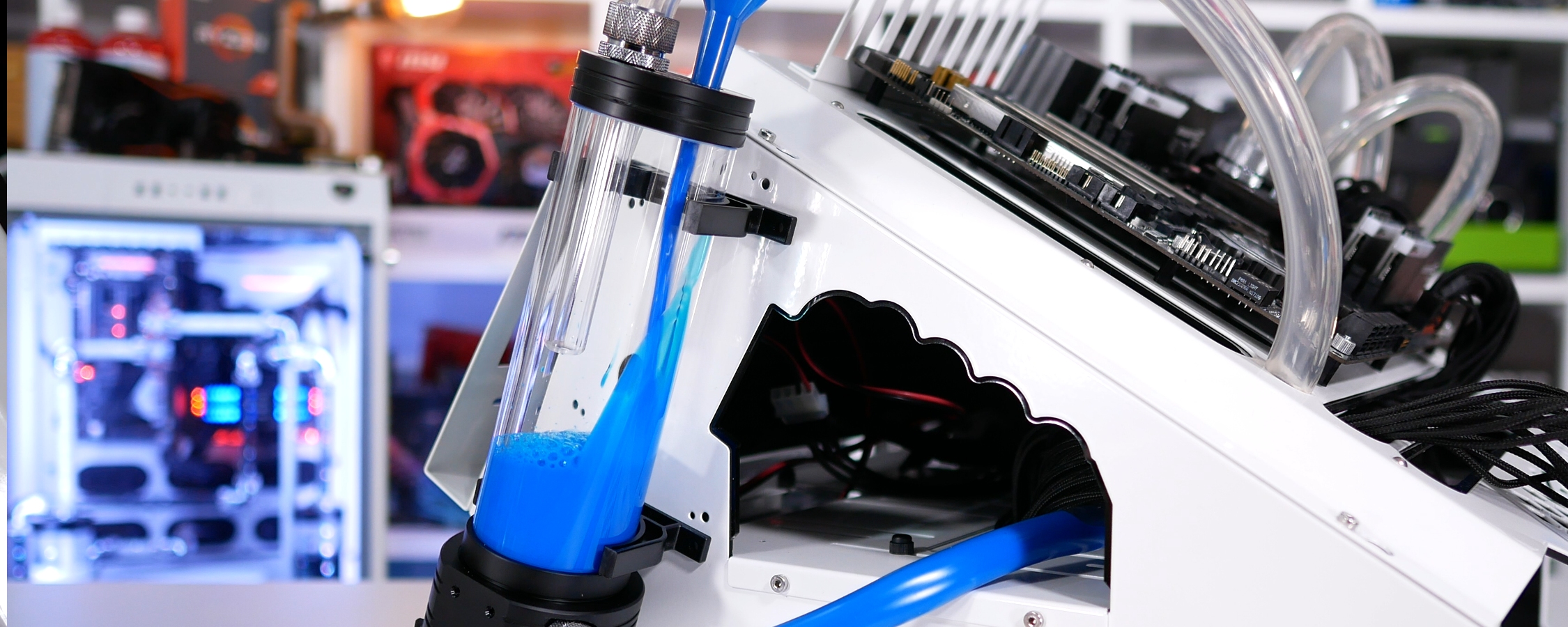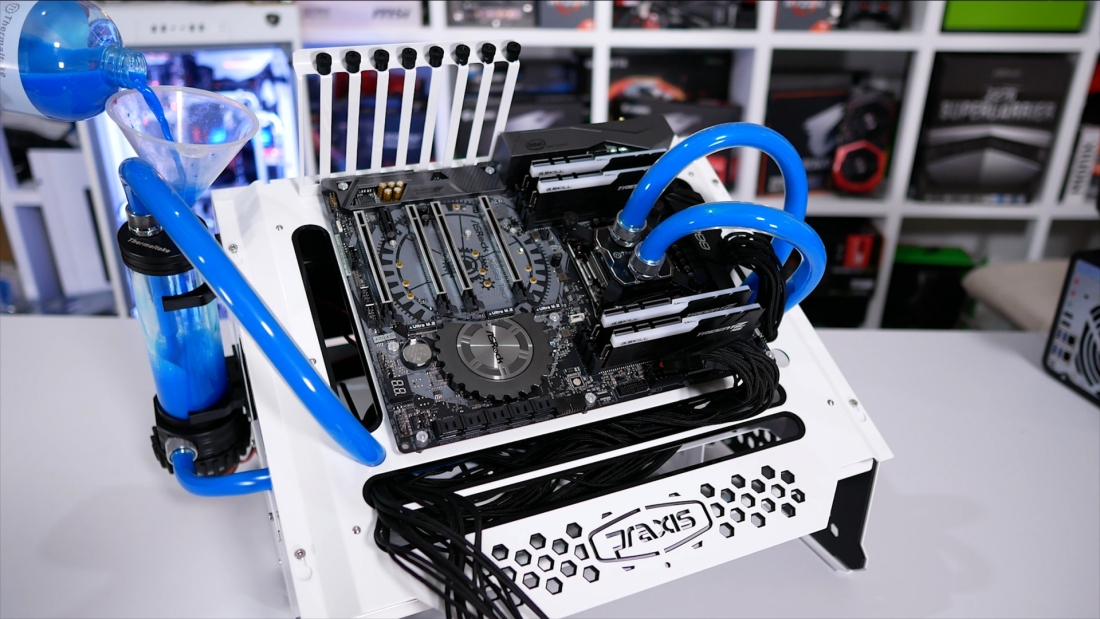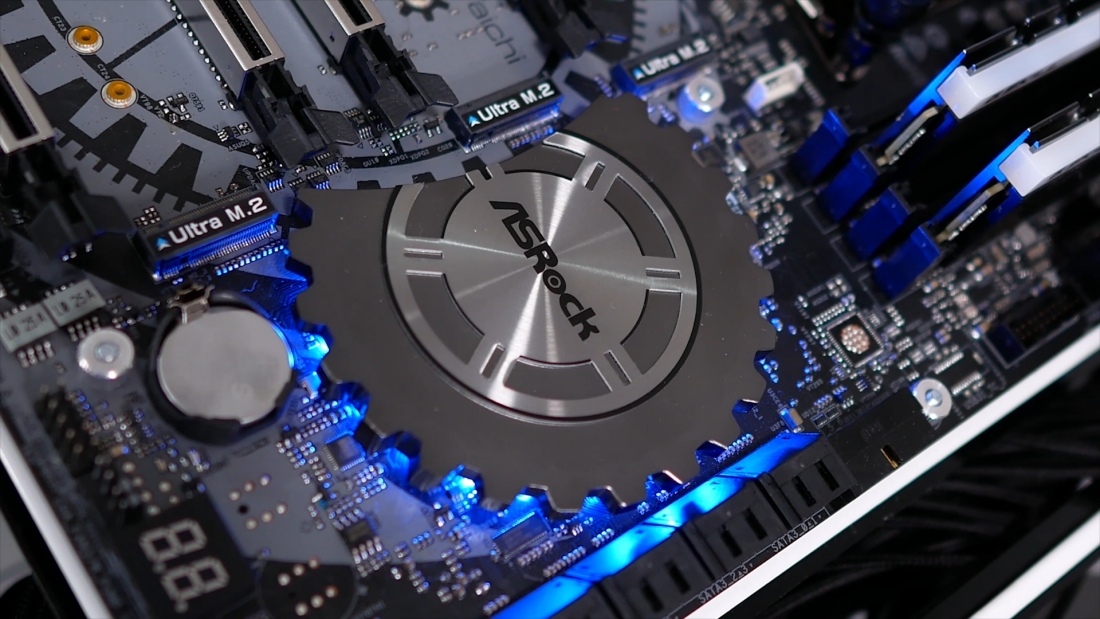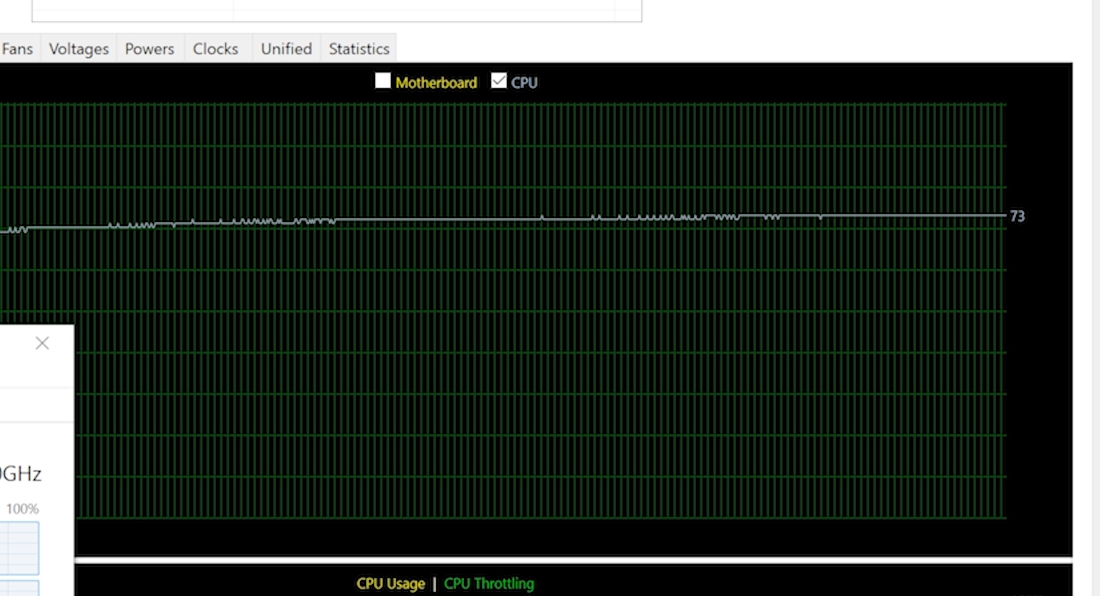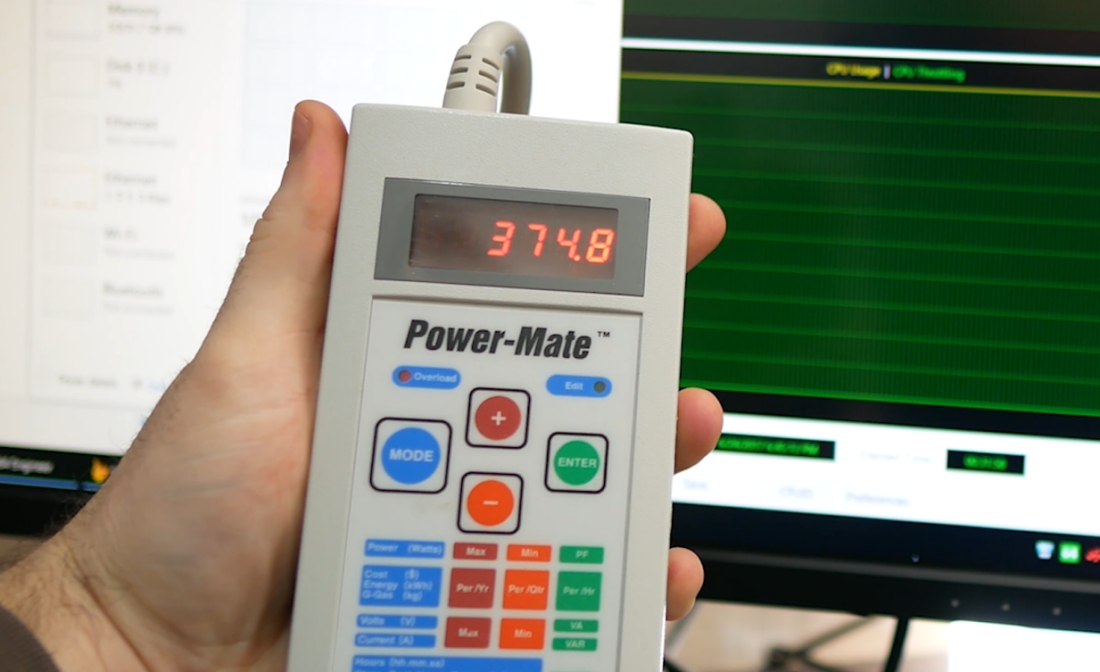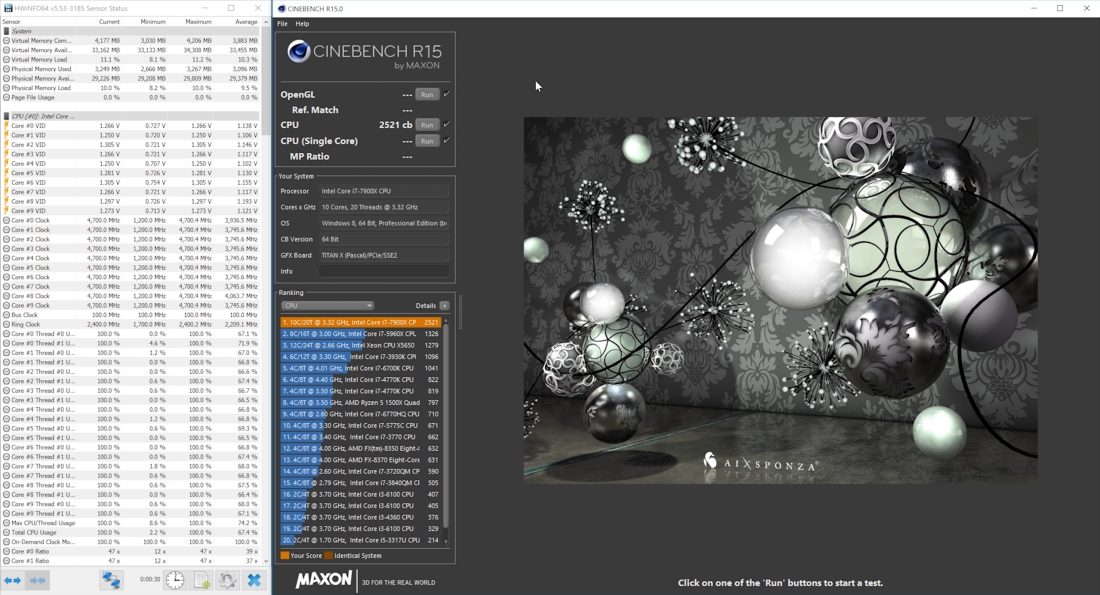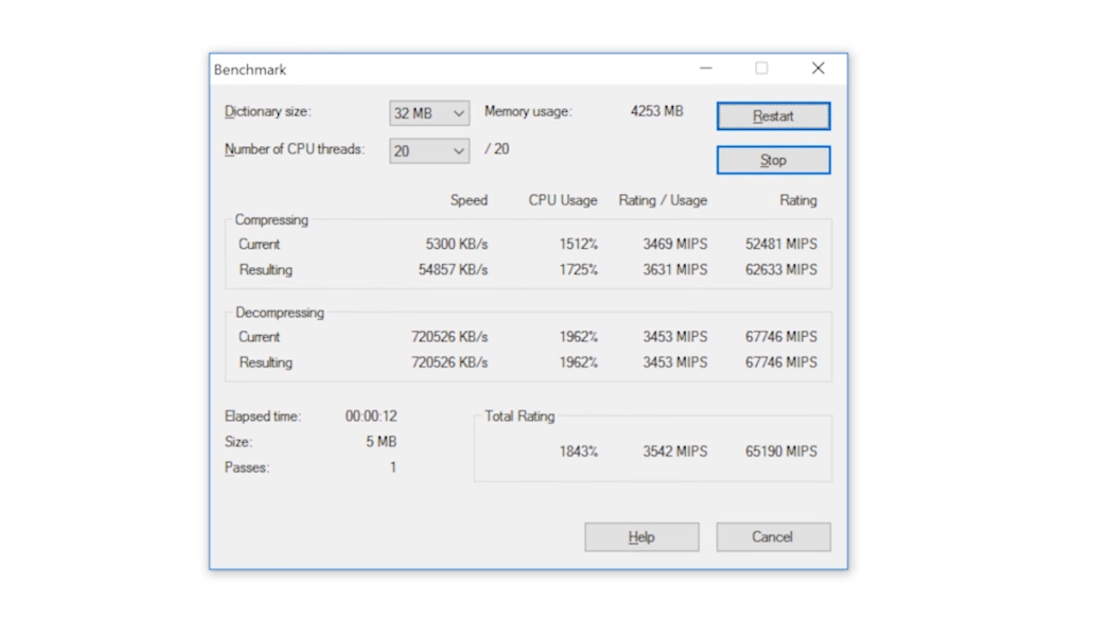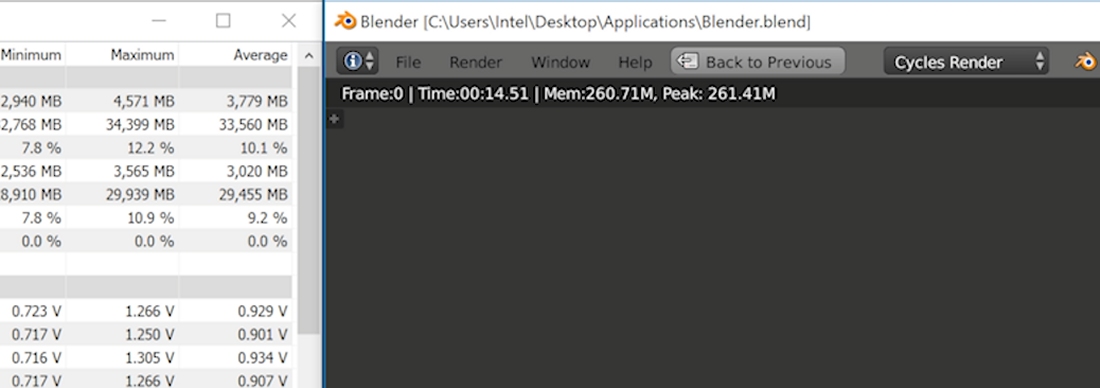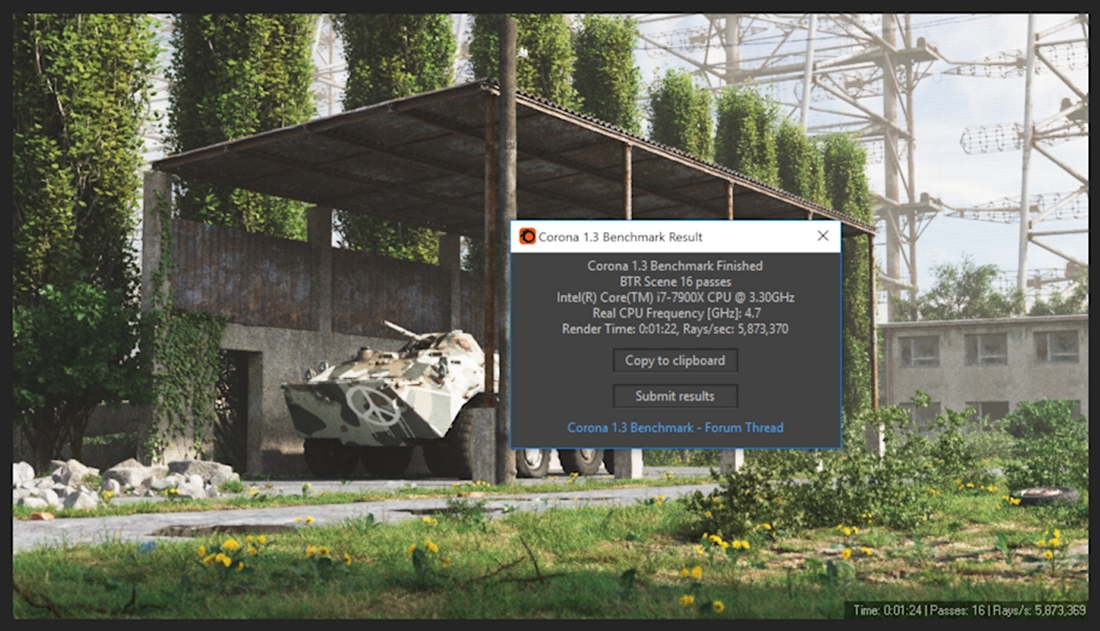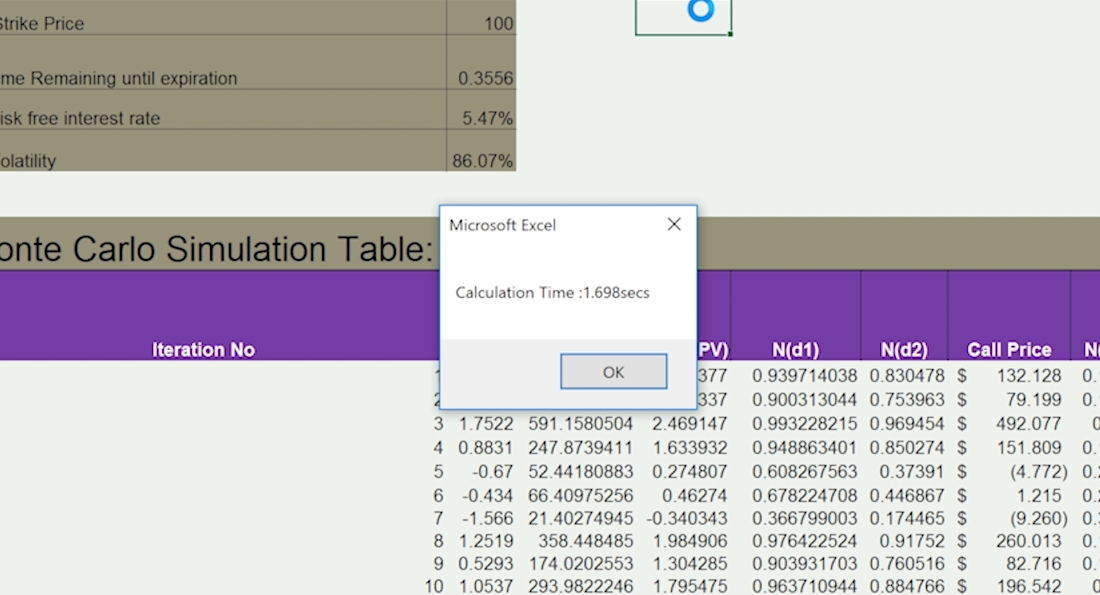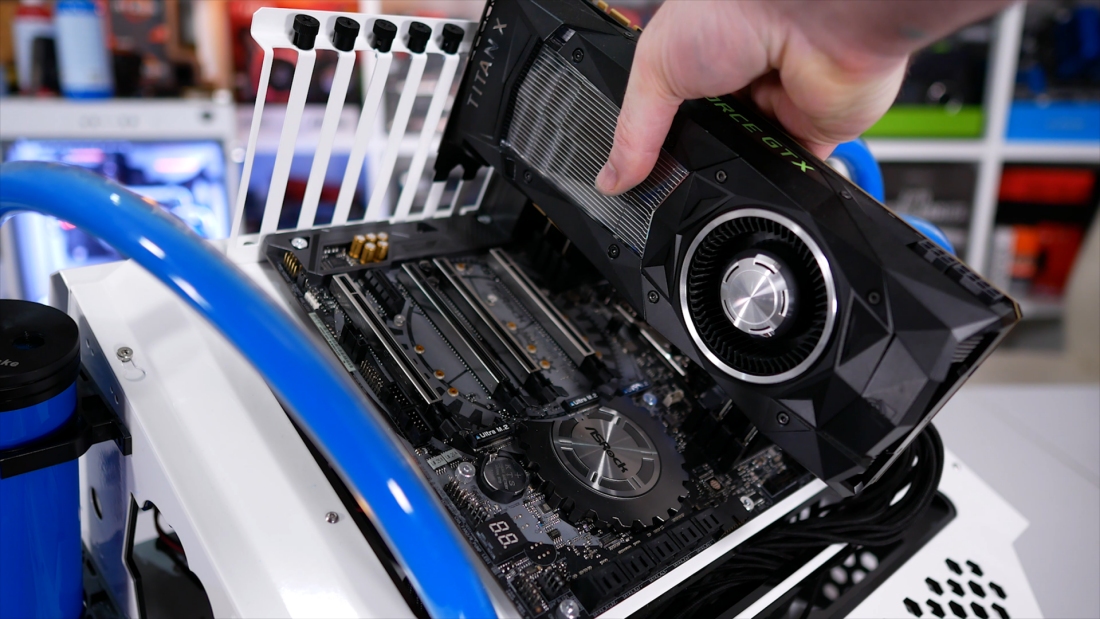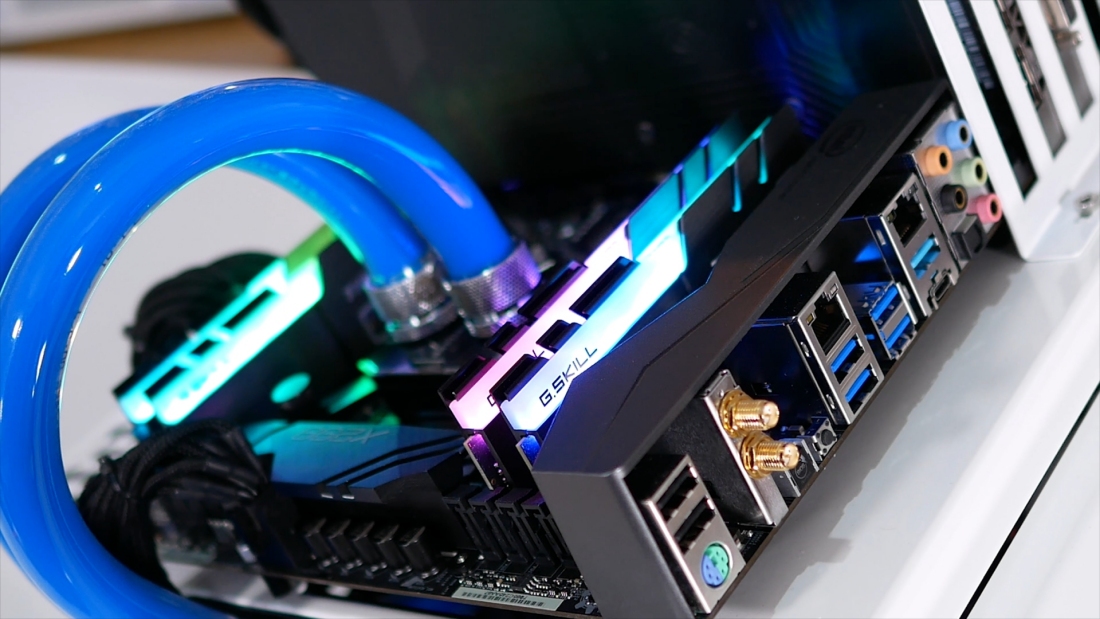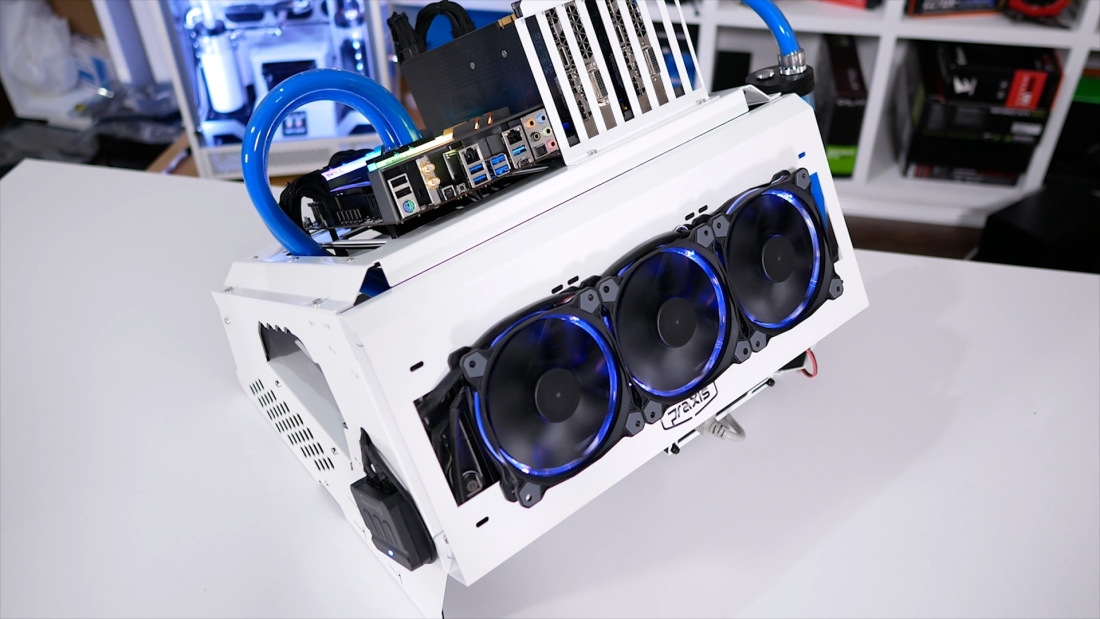We walked away impressed by the speed of Intel's new Skylake-X chips when we reviewed them last week, however thermals were a severe letdown with the Core i9-7900X being too hot to handle even when paired with a premium all-in-one liquid cooler. Given those findings, we thought the 10-core/20-thread beast deserved an article dedicated to overclocking.
There are two reasons why Skylake-X's thermals were bad. First and probably foremost is that Intel thinks they can still get away with cheaping out on their customers by using a rubbish thermal interface material rather than soldering their chips like AMD does – I'll touch on this a bit more later. Another reason the 7900X reaches boiling point temperatures is due to its extreme power requirements, particularly once the unlocked chip has been overclocked.
Out of the box, it had no trouble pushing system consumption well over 200 watts and it hit 260 watts in Cinebench, whereas AMD's Ryzen 7 1800X maxed out at 196 watts. Overclocked, the consumption was nothing short of extreme, hitting 402 watts under load at 4.6GHz using just 1.2 volts.
I should note that CPU-Z isn't reporting voltages for the 7900X correctly on my Asrock board (it's not reporting the FIVR or Fully Integrated Voltage Regulator). To show the correct live voltages I'll be using HWInfo (aka Hardware Info).
For those using something like Corsair's Hydro Series H100i V2 Extreme, keeping the 7900X from throttling at this frequency simply isn't going to be possible. Once the CPU was placed under load, temps skyrocketed to 90 degrees and continued climbing from there before the chip would eventually start to throttle.
The resulting performance was impressive, though. A 10-core/20-thread chip running all cores at 4.6 GHz is insane and if you can keep temperatures down I see no reason why 4.7GHz or even 4.8GHz isn't possible.
Hoping to achieve precisely that, I built a new test rig with an upgraded cooling solution courtesy of Thermaltake's Pacific RL360 liquid cooling kit.
This kit costs $380 and it comes packing a 360mm radiator measuring 64mm thick, so it's a big boy. You also get a Pacific PR22-D5 Pump offering a maximum flow rate of 1135L/hour and of course three 120mm fans. I was interested to see how much this would help and if it would be enough to keep the overclocked 7900X in check.
Topping the build off is PrimaChill's Praxis WetBench, courtesy of the guys at PLE Computers.
Testing The Overclock
Before moving on to the testing, I should mention that it's winter in Australia, so my room temp was ~19-20 degrees Celsius, which is a few degrees cooler than normal. Once the system warmed up, idle temps sat at just 26 degrees, but load temps are obviously the real concern.
Previously, I was only able to stabilize the 7900X at 4.6GHz, but with the upgraded cooler I managed 4.7GHz and 4.8 even looked to be possible with a bit more voltage tuning. At 4.7GHz the CPU spiked to 60 degrees as soon as it was placed under load – much better than the 87 degrees seen before.
I expected temps to continue rising rapidly but to my surprise they didn't, at least not to the extent that I had anticipated. Before long we were in the mid 60s, then 70 degrees, but soon the system maxed out at 73 degrees, occasionally peaking at 74 degrees for a second before returning to 73 degrees.
With temps staying well within acceptable parameters there was no risk of throttling and Thermaltake's 120mm fans even remained quiet. As a result, power consumption was also reduced by 7%, down from 402 watts previously at 4.6 GHz with the AIO liquid cooler to 375 watts. Granted, that still makes the 7900X super power hungry, but it's a better result for a 10-core CPU running all cores at 4.7GHz.
The overclock boosted the Cinebench R15 multi-thread score by 15%, producing an impressive 2521 points.
Again a 15% increase in performance can be seen, this time when testing with 7-Zip as the 7900X at 4.7GHz manages 67747 MIPS when decompressing.
The Blender workload was completed in just 14.5 seconds, previously the test took 17.9 seconds, a 19% time reduction.
The Corona test was completed in a blistering fast 82 seconds, whereas this test took 97 seconds previously, which works out to 15% less render time.
Don't blink! Our Excel test was completed in a mere 1.69 seconds or almost half the time it takes a stock 7700K.
Wrapping Things Up
With the right cooling solution, the Core i9-7900X can indeed be tamed and the results are rather spectacular. Granted, its power consumption is still hideous, but again this is a 10-core/20-thread CPU running at 4.7GHz.
Of course, the main sticking point remains the chip's $1,000 asking price, which is a tough sell for a desktop processor. Realistically, you'll want to spend at least $300 on the motherboard and then about that much again on cooling, making this a $1,600 package.
It'll be interesting to see what Threadripper and its core components will cost for a similar level of performance.
Many have argued that you can just delid the 7900X to reduce load temperatures by at least 20 degrees, but I'm of the opinion that you shouldn't need to delid your CPU to get the most out of it, particularly such an expensive enthusiast-grade CPU.
Needless to say, I won't be delidding any Core X CPUs. I think the mod is a fun thing for enthusiasts with deep pockets, but most users would rather not risk such an expensive CPU and void their warranty in the name of overclocking.
Back in February, I delidded one of my 7700K chips after suffering terrible thermal performance when overclocking and it reduced load temps by a full 20 degrees.
At the time, I was disappointed by Intel selling its unlocked chips with the same thermal interface material as its locked models and even more miffed that I had to buy a delid tool and liquid pro compound – essentially a $40 expense to own an unlocked Core i7, not to mention the need for an upgraded cooler. My opinion on the matter hasn't changed.
Those who attempt to overclock the Core i9-7900X can expect it to land somewhere between 4.6 and 4.8GHz depending on how lucky you get with the chip and how good your cooling setup is (it better be mighty good).
For whatever it's worth, Thermaltake's Pacific RL360 liquid cooling kit produced acceptable temperatures when overclocking the i9-7900X, while installing a premium AIO loop like the Corsair H100i v2 results in the chip being throttled.
Shopping shortcuts:
As mentioned in our Core X coverage, our advice is to wait until Threadripper arrives before making any major processor purchases. If you're dead set on the 10-core/20-thread 7900X, be prepared to invest in a custom liquid cooling solution if you plan to overclock.
